Upcoming Screenings:
no event
Follow us on Facebook
HELP BRING FINDING KUKAN TO CLASSROOMS
Sign up for our mailing list.
Category Archives: Research
December 2, 2011 — Gifts From the Blogosphere
There’s nothing like having a cold over the holidays to make you feel sorry for yourself. It’s that old dejected feeling that creeps in as the box of kleenex gets emptied. Now that I’ve recovered, I’m having some belated Thanksgiving thoughts, tallying up the windfalls that have come my way over the past year — many by way of the internet and blogosphere. Recently I made an internet connection with blogger Durian Dave, who turned out to be a very generous like-minded soul with an incredible visual archive and wealth of knowledge about old Chinese films and film actresses. See his blog and Tumblr for hours of entertaining and eye-opening articles and photos. David advanced my KUKAN research tremendously by sending a bunch of choice KUKAN related items to me, including this vintage lobby card.
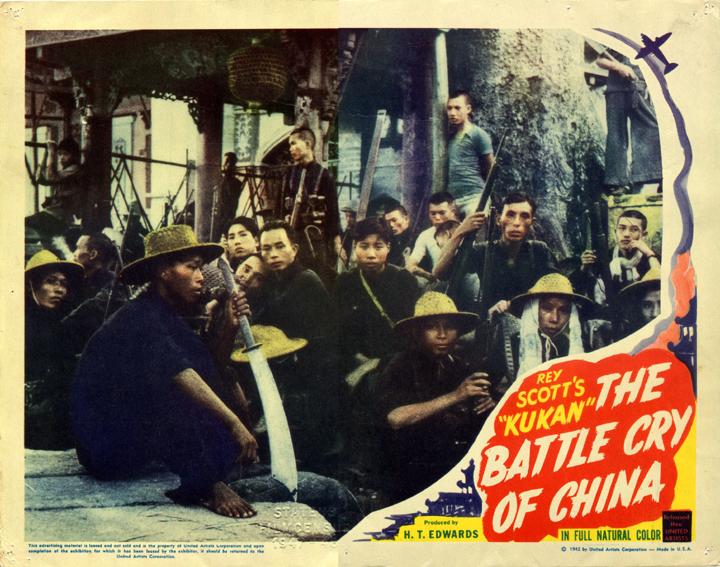
Lobby card for the 1941 Oscar-winning documentary KUKAN
Besides displaying gorgeous color and imagery, the card had an intriguing embossed stamp on the bottom of it: “STATENS FILMCENSUR 1947–48.” David suspects that the stamp refers to Sweden’s censorship board. If he’s right, that means KUKAN screened all the way in Sweden! So if any of you Swedish film collectors come across 16mm Kodachrome color footage of China that appears to be from 1939 or 1940, let me know! We’re still looking for good partial prints to help with the KUKAN restoration.
My next post will feature the fabulous photo of a jet-setting Li Ling-Ai that Durian Dave dug up as well as info about a couple of other groundbreaking Chinese American females working behind the camera. Why not now you might ask. Hey, I’m still recovering!
July 23, 2011 — A Visit to the New York City Office of the National Archives
When I first started checking to see if Li Ling-Ai could have been the real life inspiration for the fictional detective Lily Wu, I tracked down some of her travels through boat records that are available on Ancestry.com. One of the Ancestry records was a New York Exclusion file that listed the date of her arrival in San Francisco. Going over the notes on the record again, I saw that Li Ling-Ai’s file included an interrogation. Since the interrogation occurred only a year before Li Ling-Ai met Rey Scott and conceived of making the movie KUKAN, I was anxious to read through the interrogation to see if it contained any clues. In July I finally got a chance to visit the NYC office of the National Archives where Li Ling-Ai’s Exclusion file is located.
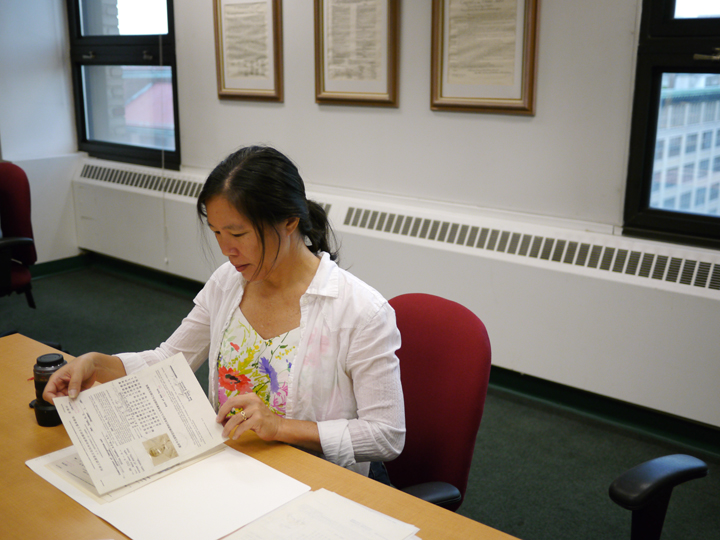
Robin Lung examines Li Ling-Ai’s Chinese Exclusion File at the NYC office of the National Archives
It was amazingly well-preserved, and I had a lot of mixed emotions while examining it. On the one hand, I was excited to see a photograph of Li Ling-Ai in the file that I had never seen before and letters that were hand-written by her. Handling the documents gave me a very visceral connection to the past and to this woman that I have been pursuing for the last couple of years.
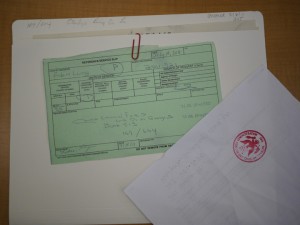
Li Ling-Ai’s Chinese Exclusion File
On the other hand I was appalled that this file existed in the first place. I had to think about the blatant anti-Chinese discrimination that led to The Chinese Exclusion Law — the reason for the creation of the file I was touching. I was astounded that a U.S. citizen like Li Ling-Ai (she was born in Hawai‘i in 1908 when it was already a U.S. Territory) who had a U.S. Passport (documented in the file) would have to spend days at the NYC Immigration Office in order to get a re-entry form that would make it possible for her to come back to her own country after leaving it! And that she would have to sit through an interrogation to prove that she was authentic despite all the other documentation she had made me even more indignant.
As a researcher, I was thankful to be able to access the revealing information in the file and draw both the positive and negative energy from it. So I have to acknowledge the hard work that goes into indexing, storing and retrieving these records. That day at the Archives I witnessed two volunteers who were laboriously going through files and entering data into laptops so that others like me could find information about ancestors and characters from the past. I wish I had gotten their names and taken photos of them if only to pay a small homage to all the others like them who have helped forward my investigation.
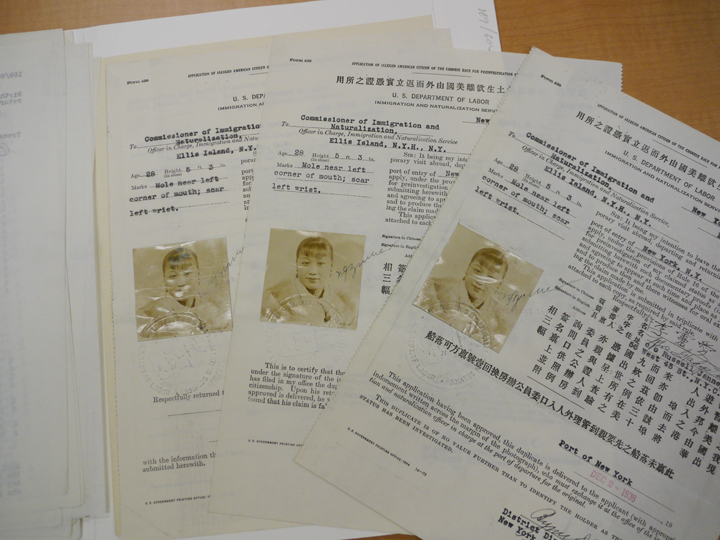
Documents in Li Ling-Ai’s Chinese Exclusion File
May 21, 2011 — Official FINDING KUKAN Website Goes Live
“If you build it.…they will come.”
I’m adapting the lines from the great baseball book/movie Shoeless Joe/Field of Dreams and hoping they’ll apply to this website and eventually to the finished documentary FINDING KUKAN. Since this project has been fueled by online research and discoveries made possible by other websites, it’s only appropriate that I put out one of my own. Now it’s up to the cyberspace gods to work their magic…
May 2010 — Producer Robin Lung Travels to NYC for Research
Producer Robin Lung traveled from Hawai‘i to New York City, New Jersey and Connecticut to research her documentary film on Li Ling-Ai and KUKAN. She was able to meet with several of Li Ling-Ai’s friends and access important archives at Columbia University and Princeton dealing with US/China relations and the pre-WWII China Aid effort. With the assistance of expert cameraman Frank Ayala, Robin interviewed Rey Scott’s niece Connie Tupper who saw KUKAN when she was 12 years old.
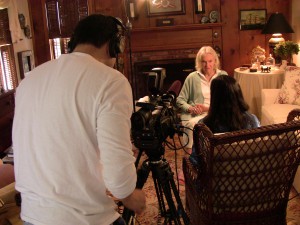
Cameraman Frank Ayala and Producer Robin Lung interview Rey Scott’s niece Connie Tupper



